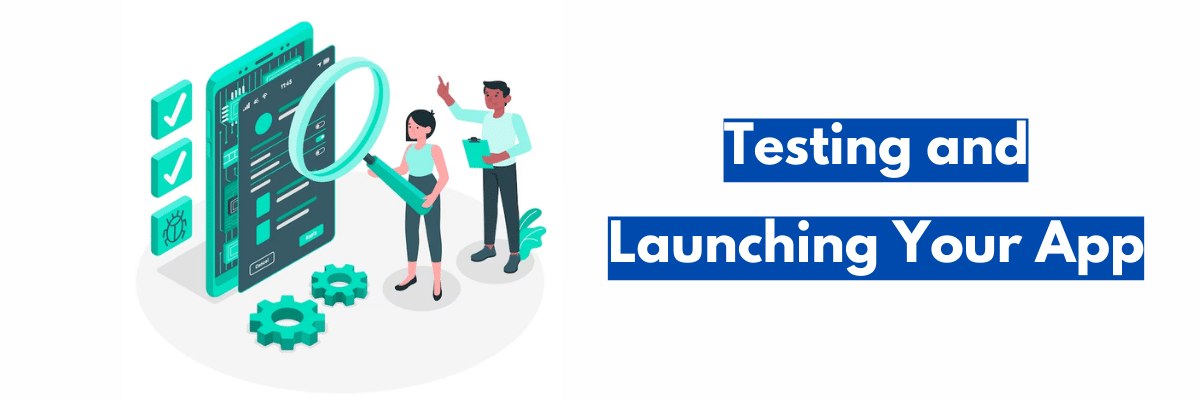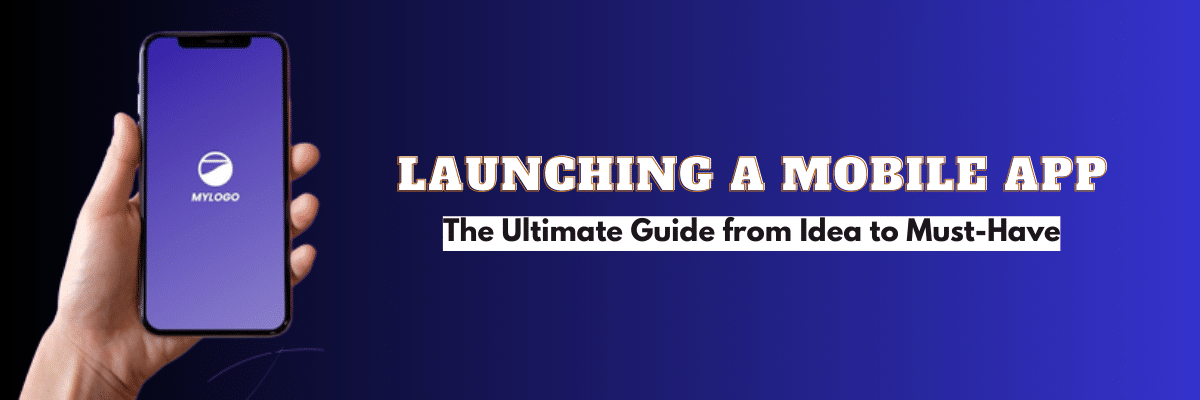Launching a Mobile App: The Ultimate Guide from Idea to Must-Have
Do you have an amazing app idea that you want to bring to life by launching a mobile app?
With over 2.2 million apps available on the App Store and Google Play, launching your own mobile app may seem like an intimidating task. But fear not! In this comprehensive guide, we’ll show you how to turn your idea into a must-have app that users can’t resist.
From defining your app’s purpose and target audience to developing a user-friendly interface and creating a buzz-worthy marketing campaign, we’ll take you through every step of the process to ensure that your app stands out in a crowded market.
So, buckle up and get ready to dive into the exciting world of app development – the possibilities are endless!
Table of Contents
- Defining Your App Idea
- Designing Your App
- Developing Your App
- Testing and Launching a Mobile App
- Post-Launch Strategies
- Conclusion
- Frequently Asked Questions
Defining Your App Idea

1. Identifying Your Target Audience
The success of your app depends largely on how well it meets the needs of your target audience. Start by identifying who your ideal user is, what their interests and preferences are, and what problems they are looking to solve. This will help you create a more targeted and relevant app that resonates with your audience.
2. Determining Your App’s Purpose and Features
Once you have a clear understanding of your target market and audience, you need to define the purpose and features of your app. What problem will your app solve for your target audience? What features will it include to meet their needs and expectations? List out all the key features and functionalities that you want to include in your app.
3. Conducting Market Research
Before you start building your app, it’s important to conduct thorough market research. This will help you understand the current state of the market and your competitors and identify any gaps or opportunities that your app can address.
Look at similar apps in your niche, analyze their features, pricing, and user experience, and identify areas where you can differentiate your app.
4. Creating a Unique Selling Proposition:
To stand out in a crowded app market, you need to create a unique selling proposition (USP) that sets your app apart from the competition. Your USP should clearly communicate the benefits of your app and what makes it unique. This could be a particular feature, user experience, or pricing model that your target audience can’t find anywhere else.
By defining your app idea, you can create a more targeted and relevant app that meets the needs of your target audience and stands out in the app market.
Take the time to do thorough research and analysis to ensure that your app idea has a solid foundation and is positioned for success.
Designing Your App

In this section, we’ll cover the key aspects of designing your app to ensure it’s user-friendly, engaging, and aligned with your target audience’s needs.
1. Define Your User Experience (UX)
The first step in designing your app is to define your user experience (UX). UX encompasses all aspects of how your users interact with your app, from the first impression to the final action.
You need to understand your user’s journey and make it as smooth and intuitive as possible. Consider creating user personas to get a better understanding of your target audience and their needs.
2. Create a Wireframe
Once you have a clear idea of your app’s UX, it’s time to create a wireframe. A wireframe is a visual representation of your app’s layout, functionality, and navigation. It’s a simple, low-fidelity design that helps you test and iterate your app’s features before investing in the final design.
3. Choose Your Design Style
Choosing the right design style is crucial to creating a visually appealing and engaging app. Consider the mood and tone of your app and choose a design style that aligns with it. If you’re building a fitness app, for example, you may want to use bold and energetic colours and fonts. If you’re creating a meditation app, you may want to use softer and calming tones.
4. Focus on Functionality
While the design is essential, functionality should always be your top priority while launching a mobile app. Make sure your app is easy to use and navigate and that all features work seamlessly. Test your app thoroughly to ensure there are no bugs or glitches that could negatively impact the user experience.
5. Get Feedback
Once you have a working prototype of your app, it’s time to get feedback. Share your app with beta testers and ask for their honest opinions. Use their feedback to improve your app and make it more user-friendly and engaging.
Designing your app is a critical step in the process of mobile app development and launching a mobile app. By following these steps, you can create a user-friendly, engaging, and visually appealing app that meets your target audience’s needs.
Developing Your App

In this section, we’ll cover the key aspects of developing your app to ensure it’s optimized for performance, secure, and scalable.
1. Choose Your Development Approach
There are two primary approaches to app development: native and hybrid. Native app development uses a specific programming language and software development kit (SDK) for each platform, such as iOS and Android.
Hybrid app development, on the other hand, uses a single codebase that can be deployed to multiple platforms. Consider the pros and cons of each approach and choose the one that best fits your app’s requirements.
2. Focus on Performance
Performance is critical for a successful app. Users expect mobile apps to load quickly, respond immediately, and function smoothly. To optimize your app’s performance, consider reducing its size, minimizing its memory footprint, and optimizing its code. Use performance analysis tools to identify and address any performance bottlenecks.
3. Ensure App Security
Security is another critical aspect of app development. Your app should be secure from unauthorized access, data theft, and other security threats.
Implement security features such as encryption, two-factor authentication, and secure communication protocols. Consider hiring a security consultant to assess your app’s security vulnerabilities and provide recommendations for improvement.
4. Prepare for Scalability
Scalability is essential for a successful app that can handle increased user traffic and data. Design your app architecture to be scalable, and use cloud-based services to handle the increased load. Consider implementing features such as caching, load balancing, and auto-scaling to ensure your app can handle increased demand.
Developing your app is a complex and challenging process, but by focusing on performance, security, testing, and scalability, you can create a successful and sustainable product.
Testing and Launching a Mobile App

1. Conduct Quality Assurance (QA) Testing
QA testing is essential to ensure your app is free of bugs and glitches that could negatively impact the user experience. Test your app on a variety of devices and operating systems to ensure it’s functional and reliable.
2. Set a Launch Date
Setting a launch date is crucial to the success of your mobile app launch strategy. Choose a date that aligns with your marketing strategy and gives you enough time to complete all necessary preparations.
3. Create a Marketing Plan
Marketing is essential to the success of your app. Create a marketing plan that includes social media, email marketing, app store optimization, and other tactics to increase awareness and drive downloads.
4. Submit Your App to App Stores
Submit your app to the relevant app stores, such as the App Store and Google Play. Ensure your app meets all guidelines and requirements and that you have all the necessary metadata and assets.
5. Monitor App Performance
Monitor your app’s performance using analytics tools to track downloads, user engagement, and other key metrics. Use this data to optimize your app and improve user experience.
Testing and launching a mobile app is the final step in the successful mobile app launch and development process. By following these steps, you can ensure your app is ready for release and set up for success in the app marketplace.
Post-Launch Strategies

1. Gather User Feedback
Continue to gather user feedback and use it to improve your app’s functionality and user experience. Consider implementing in-app feedback forms and surveys to collect feedback.
2. Optimize Your App Store Listing
Regularly update and optimize your app store listing to improve visibility and attract new users. Use A/B testing to test different versions of your app store listing and optimize for keywords and visual appeal.
3. Use App Analytics to Monitor Performance
Track user engagement, retention, and conversion rates using app analytics tools. Use this data to optimize your app and improve user experience.
4. Provide Regular Updates and Bug Fixes
Regularly update your app with new features, bug fixes, and security updates to keep users engaged and satisfied. This can help you retain your user base and attract new users.
5. Engage with Your User Base
Engage with your user base regularly through in-app messaging, your social media accounts, and email marketing. Consider creating a loyalty program or referral program to incentivize users to share your app with others.
6. Expand Your User Base
Continue to expand your user base through targeted marketing campaigns, influencer marketing, and social media. Consider collaborating with other apps or businesses to reach new audiences.
Post-launch strategies are crucial to the long-term success of your app. By implementing these strategies, you can improve user experience, attract new users, and retain your existing user base.
Conclusion
In a nutshell, launching a mobile app can be a complex process, but with the right strategies in place, you can create a must-have app so many mobile apps that meet the needs of your target audience. By following the steps outlined in this guide, you can bring your app to market, gather feedback, and continuously improve its functionality and user experience.
Remember, launching a mobile app is just the beginning. To ensure long-term success, it’s essential to gather user feedback, optimize your app store listing, keep your app updated, engage your users, and experiment with new marketing strategies.
Building a mobile app can be a challenging but rewarding experience. By staying focused, remaining agile, and staying true to your vision, you can create an app that stands out in a crowded market and delivers real value to your users.
We hope this guide has been helpful and informative for future users. Good luck with your app launch, and remember to celebrate your successes along the way!
Thank you for reading through to the end. Do check out our next blog, ‘Pros and Cons of Mobile App Development’.
Frequently Asked Questions
What does launching a mobile app mean?
Launching a mobile app means making it available for download and use by the general public on app stores and other platforms.
How do I track my app’s performance?
Use analytics tools to track your app’s performance, including metrics such as downloads, user retention, and in-app purchases. Use this data to identify areas for improvement and optimize your app’s functionality and user experience.
How long does it take to develop an app?
The time it takes to develop an app varies depending on factors such as complexity, features, and platform. It can take anywhere from a few months to over a year to develop an app.
How do I promote my app?
To promote your app, create a marketing plan that includes tactics such as social media marketing, influencer marketing, app store optimization, and paid advertising. Consider partnering with app developers for complementary apps or offering referral programs to expand your reach.
How do I respond to user feedback and reviews?
Respond to user feedback and reviews promptly and professionally. Use negative feedback as an opportunity to improve your app and show users that you value their input.






![Beyond ChatGPT: Best ChatGPT Alternatives in 2023 [Free & Paid]](https://saaslyft.com/wp-content/uploads/2023/03/Its-All-About-the-Timing-6-768x309.png)